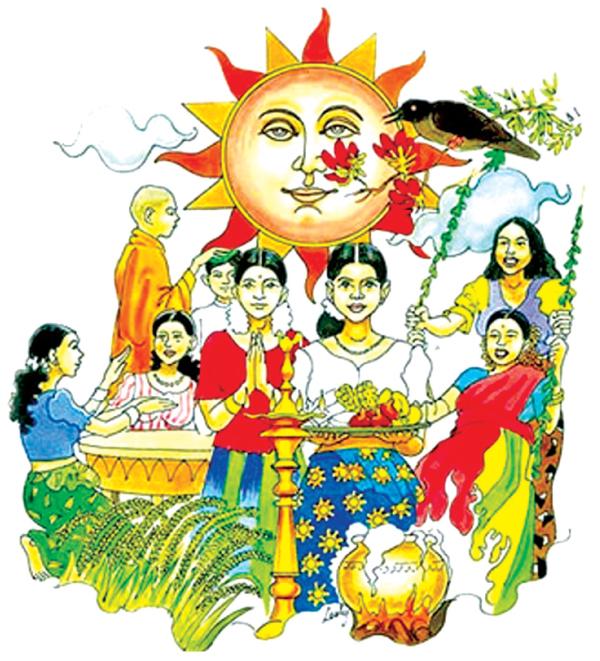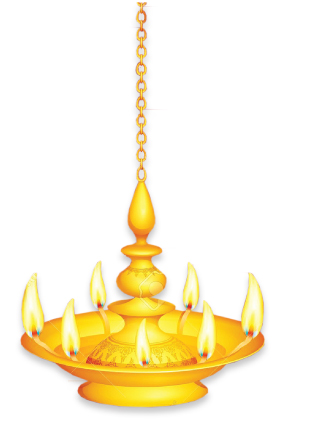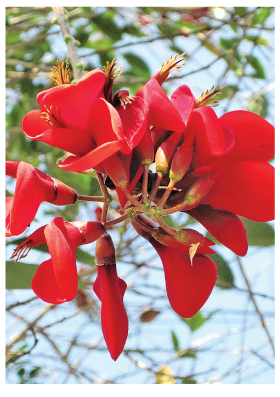
 The Sinhala and Hindu New Year is celebrated with splendour and rituals. The transition of the Sun from the House of Pisces to the House of Aries marks the beginning of Aluth Avurudu (in Sinhala) and Puthandu (in Tamil) and is usually celebrated on April 14th every year. The whole country takes on a festive mood as people gear for the upcoming celebrations by cleaning their homes, shopping and making New Year sweetmeats, to begin the New Year on a joyous and positive note.
The Sinhala and Hindu New Year is celebrated with splendour and rituals. The transition of the Sun from the House of Pisces to the House of Aries marks the beginning of Aluth Avurudu (in Sinhala) and Puthandu (in Tamil) and is usually celebrated on April 14th every year. The whole country takes on a festive mood as people gear for the upcoming celebrations by cleaning their homes, shopping and making New Year sweetmeats, to begin the New Year on a joyous and positive note.
 The sound of firecrackers and the rhythm of rabana (a one-sided traditional drum) signal the dawn of a new beginning – Aluth Avurudda. As the New Year sets in, families become busy with activities, getting ready for the rituals that are to follow. Household preparations are done in advance, perhaps even two or three weeks prior to the festival; homes are repainted, floors are polished and kitchens are cleaned.
The sound of firecrackers and the rhythm of rabana (a one-sided traditional drum) signal the dawn of a new beginning – Aluth Avurudda. As the New Year sets in, families become busy with activities, getting ready for the rituals that are to follow. Household preparations are done in advance, perhaps even two or three weeks prior to the festival; homes are repainted, floors are polished and kitchens are cleaned.
All unwanted items are thrown away, making the setting clean and tidy to mark a new beginning. The best part is the preparation of sweetmeats and purchasing new clothes. The traditional oil lamp is lit at the auspicious time. As the sun exits Meena, people take the final bath of the old year. As the punya kalaya or nonagathaya (inauspicious time) begins all business and work related activities come to a halt. Everyone occupies themselves in spiritual activities by visiting temples.
The Hindu families rise early at the dawn of the New Year and collect Maruthu neer, a special water that contains a mix of herbal leaves and flowers such as lotus, pomegranate and few others. This ritual is considered an act of purification and normally Maruthu neer is anointed at an auspicious time as recommended by the astrologers or priests in the kovils.
The spirit of New Year sets in when everyone dresses in new clothes and wish family and friends with Puthandu Valthukkal (Happy New Year) in Hindu homes. Later on, families gather at a place, ideally at the entrance to the house where a potful of milk is boiled. As the first rays of the new year begin to fall, watching the milk overflow from the rim is a sight meant to bring boundless joy and bounty into ones life. The milk is used to make pongal—a type of sweetened rice made in Hindu homes during times of festivals. The Pongal is made at a specific time in which the sun moves from the Meena Rasi ( Pisces) to Mesha rasi (Aries).

The Hindus too scrub, clean and get rid of all old items. Houses are white-washed and tidied up as it is believed that the Goddess Lakshmi visits and resides in a clean home and showers her blessings on the family to prosper. Tying the traditional Maviliai Thoranam symbolises the onset of a festival in any Hindu house hold, during these times. On the eve of the New Year, a garland of Mango leaves or the Maavilai Thoranam is hung in just above the doorstep to ward off the evil eye while announcing that the festivities are about to begin.
Another attraction, is the Kolam which are designs drawn with rice flour at one’s doorstep or on the main entrance. Ladies of the same neighbourhood embark on a silent competition with each other on coming up with the best design, as they draw these artful creations on New Year’s eve.
